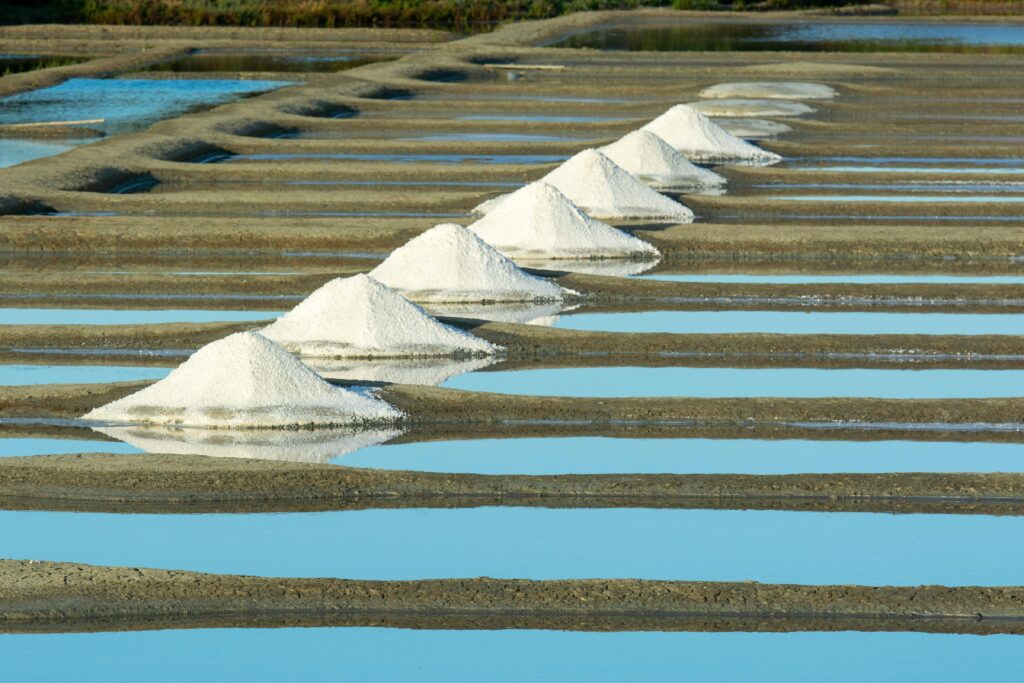
For centuries, people in Goa have been making salt using simple methods. They have taught these ways to their children, making sure the process stays good and useful. Here’s an explanation of how they do it:
Starting Near the Sea
Salt in Goa starts in big, shallow fields near the sea called salt pans. Here, seawater is left to dry naturally under the hot sun.
Evaporation Process
During the dry season, workers allow seawater to enter the pans. As the sun shines brightly, it evaporates the water, leaving behind crystals of salt. Workers collect these crystals for further processing.
Collecting the Salt
Over time, the seawater transforms into tiny salt crystals. Workers then gather these crystals into heaps along the edges of the pans for further processing.
Cleaning and Storing
To prepare the salt for use, workers wash off dirt and seawater from the crystals. After cleaning, the salt is left under the sun to dry completely. Finally, it’s packed for sale or distribution.
Cultural Importance
Salt making in Goa is not just about earning money, it is a big part of the region’s culture and history. This old craft shows how Goan people have always used their natural surroundings, especially the sea, to get this important resource. The way they make salt connects them to their land and sea, showing the close relationship between their culture and nature. By keeping this old practice alive, Goans not only make a living but also respect their rich cultural past.
Conclusion
In conclusion, visiting a salt pan in Goa offers a fascinating glimpse into the traditional process of salt making. You see how nature, the sun, and the sea all play their roles in creating salt. The sun evaporates the seawater, leaving behind salt crystals. This process highlights how Goa’s coast has provided a vital resource for its people for many years. It also shows the deep connection between the land and its inhabitants, reflecting Goa’s rich cultural heritage.


